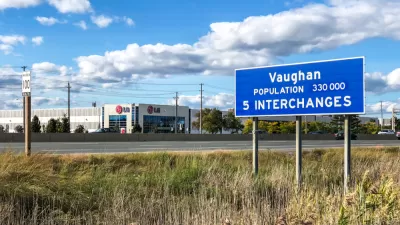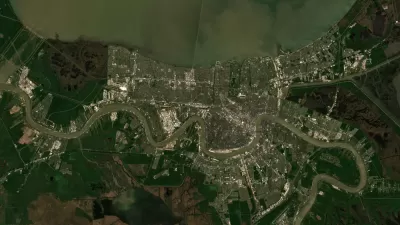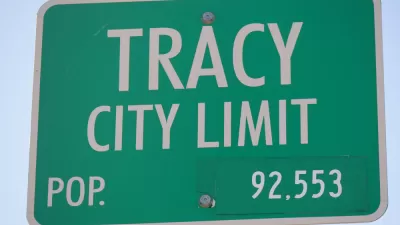Forty-five miles southwest of the Twin Cities sits the exurb of New Prague, a town with state-of-the-art infrastructure but crushing debt. It’s an example of what happens when the “Ponzi scheme” underlying sprawl development comes crumbling down.
Planned at the height of the "exurban boom", New Prague is now feeling the consequences of borrowing $30 million to build a state-of-the-art sewer plant for residents that never came.
In an unsustainable effort to recoup some of its spending, New Prague has repeatedly raised utility rates for its smaller-than-expected number of homeowners and businesses. David Peterson reports, "New Prague raised its rates by 35 percent in 2009, 31 percent in 2010 and 25 percent in 2011 and 2012" but according to the City Administrator Michael Johnson, more jumps are needed to "get those rates to the level needed to cover the debt." This poses a problem when considering that water rates in Minnesota's exurbs are already much higher than in its metro areas, asserts Jeff Freeman, executive director of the Public Facilities Authority.
New Prague is not alone in this situation. Other exurbs such as Avon and North Branch find themselves in the same boat, reports Peterson, strapped for cash and considering draconian measures to payback past borrowing. Like some of these cities, New Prague is now contemplating another budgetary option: long-term debt refinancing. However, "New Prague's financial consultants cautioned that [this would mean] an extra $8.45 million in long-term interest costs for a community of about 7,000," writes Peterson.
For New Prague, there are some signs of hope, however, including a slight resurgence in housing starts, and the announcement of a factory expansion and new jobs. City officials like Johnson still remain cautious, "There's no way to develop any forecast." he says.
FULL STORY: Exurbs built infrastructure, but nobody came to pay for it

Study: Maui’s Plan to Convert Vacation Rentals to Long-Term Housing Could Cause Nearly $1 Billion Economic Loss
The plan would reduce visitor accommodation by 25,% resulting in 1,900 jobs lost.

Alabama: Trump Terminates Settlements for Black Communities Harmed By Raw Sewage
Trump deemed the landmark civil rights agreement “illegal DEI and environmental justice policy.”

North Texas Transit Leaders Tout Benefits of TOD for Growing Region
At a summit focused on transit-oriented development, policymakers discussed how North Texas’ expanded light rail system can serve as a tool for economic growth.

Paris Bike Boom Leads to Steep Drop in Air Pollution
The French city’s air quality has improved dramatically in the past 20 years, coinciding with a growth in cycling.

Why Housing Costs More to Build in California Than in Texas
Hard costs like labor and materials combined with ‘soft’ costs such as permitting make building in the San Francisco Bay Area almost three times as costly as in Texas cities.

San Diego County Sees a Rise in Urban Coyotes
San Diego County experiences a rise in urban coyotes, as sightings become prevalent throughout its urban neighbourhoods and surrounding areas.
Urban Design for Planners 1: Software Tools
This six-course series explores essential urban design concepts using open source software and equips planners with the tools they need to participate fully in the urban design process.
Planning for Universal Design
Learn the tools for implementing Universal Design in planning regulations.
Smith Gee Studio
Alamo Area Metropolitan Planning Organization
City of Santa Clarita
Institute for Housing and Urban Development Studies (IHS)
City of Grandview
Harvard GSD Executive Education
Toledo-Lucas County Plan Commissions
Salt Lake City
NYU Wagner Graduate School of Public Service





























